In the tropical regions of Southeast Asia, a small but vibrant bird with captivating colors and remarkable hunting skills graces the skies. Introducing the Chestnut-Headed Bee-Eater (Merops leschenaulti), a true gem of the avian world. Join us on a journey to discover the beauty and fascinating characteristics of this enchanting bird.
Chestnut-Headed Bee-Eater images
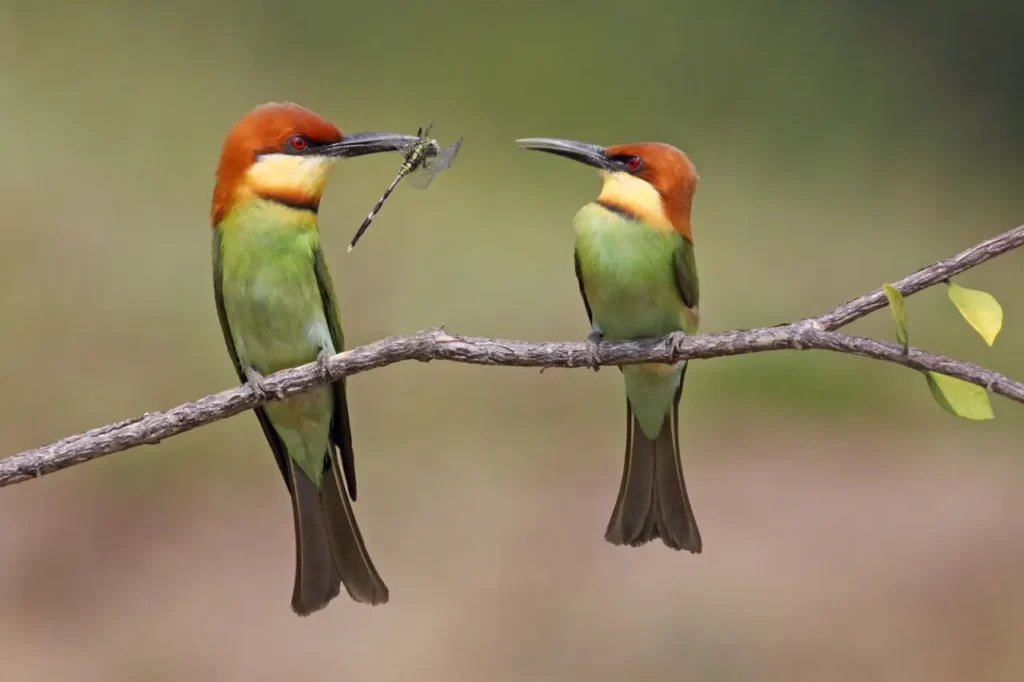
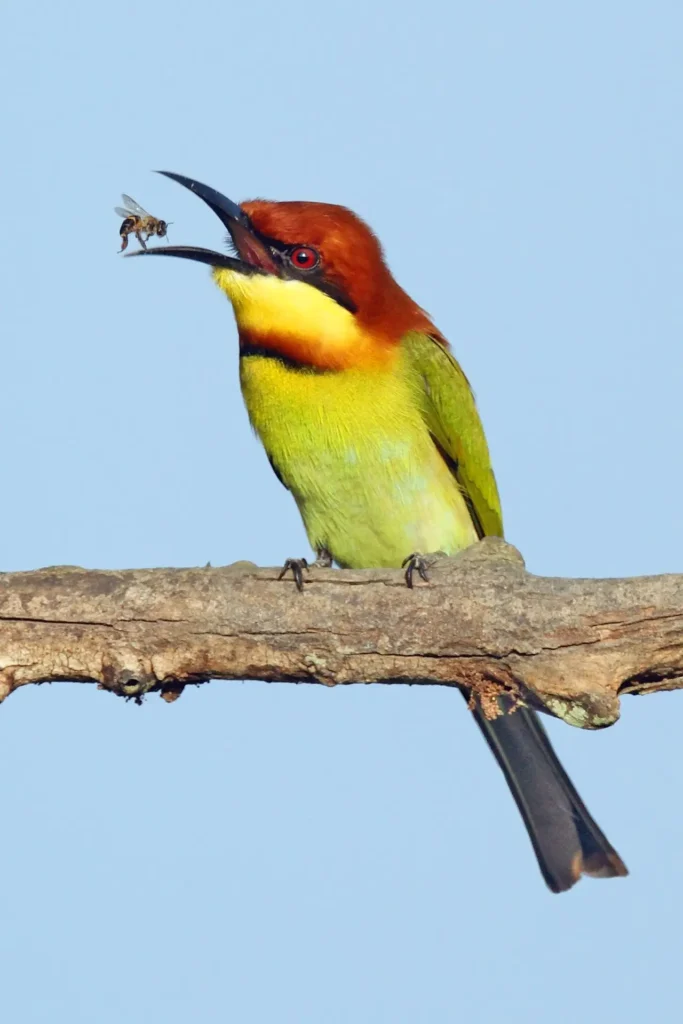
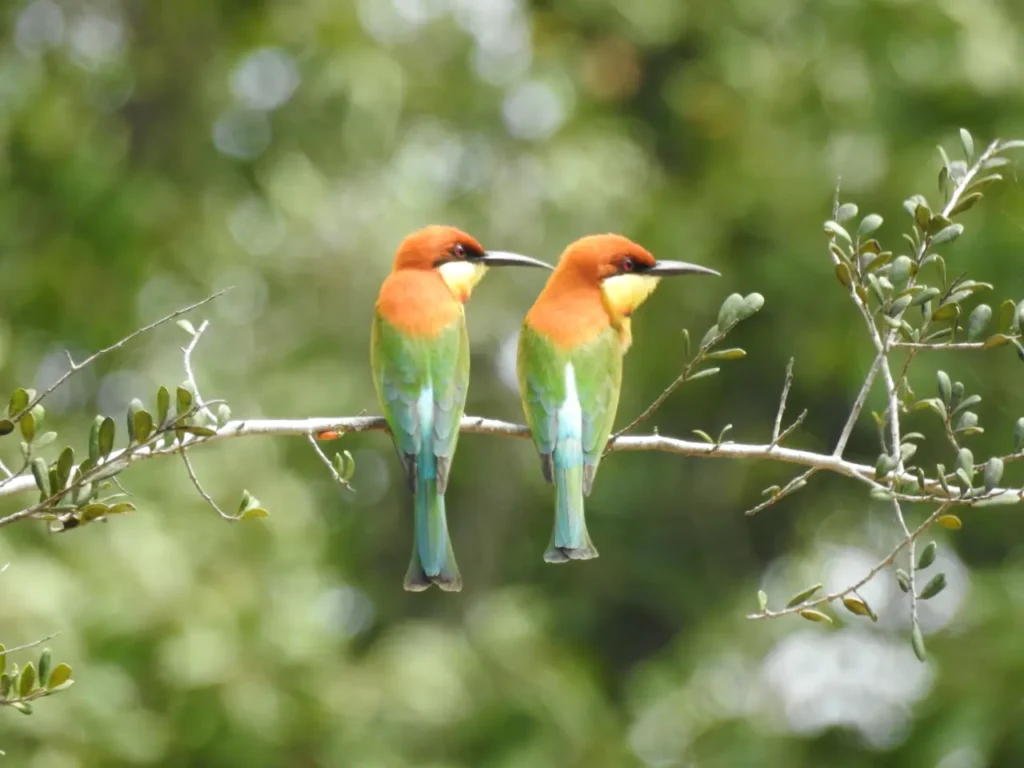
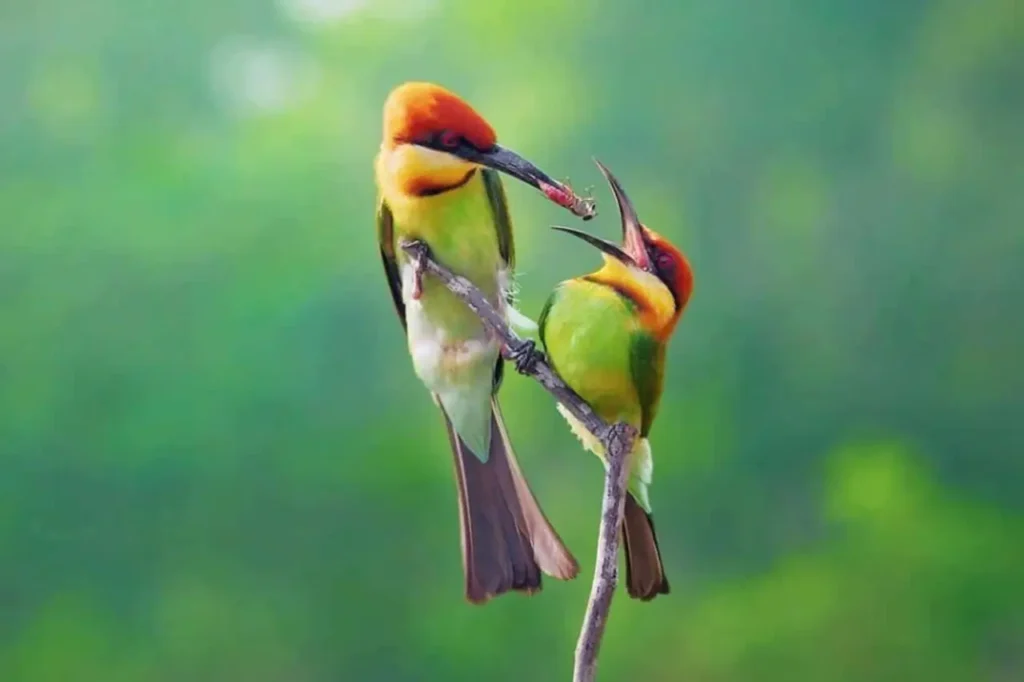
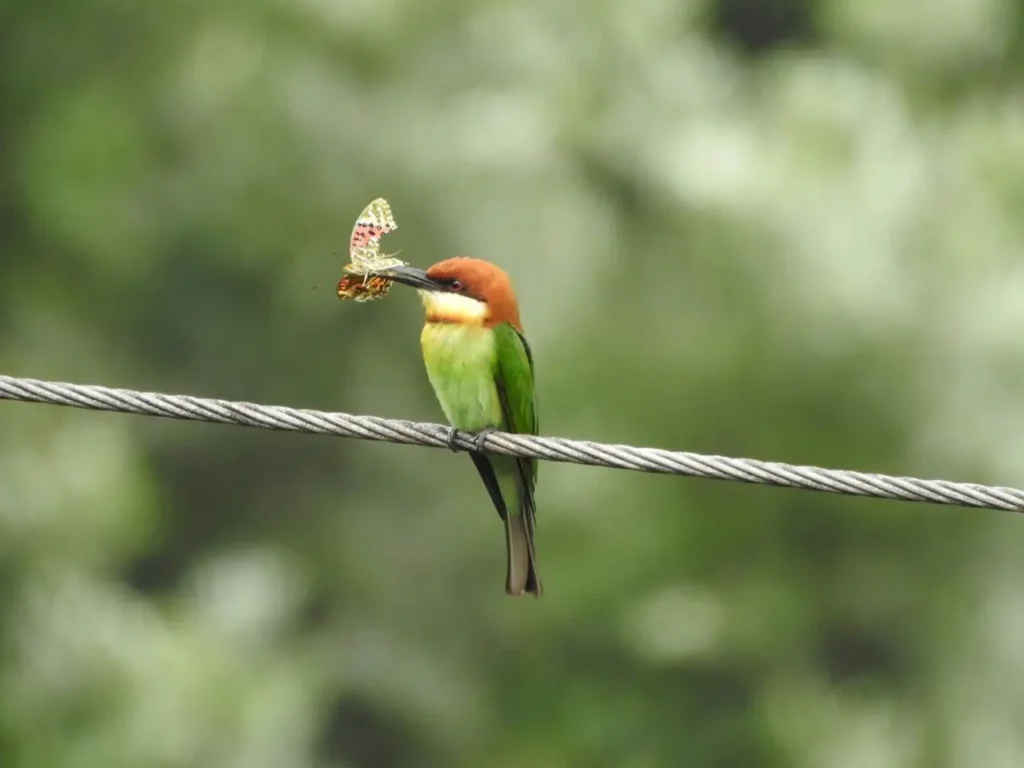
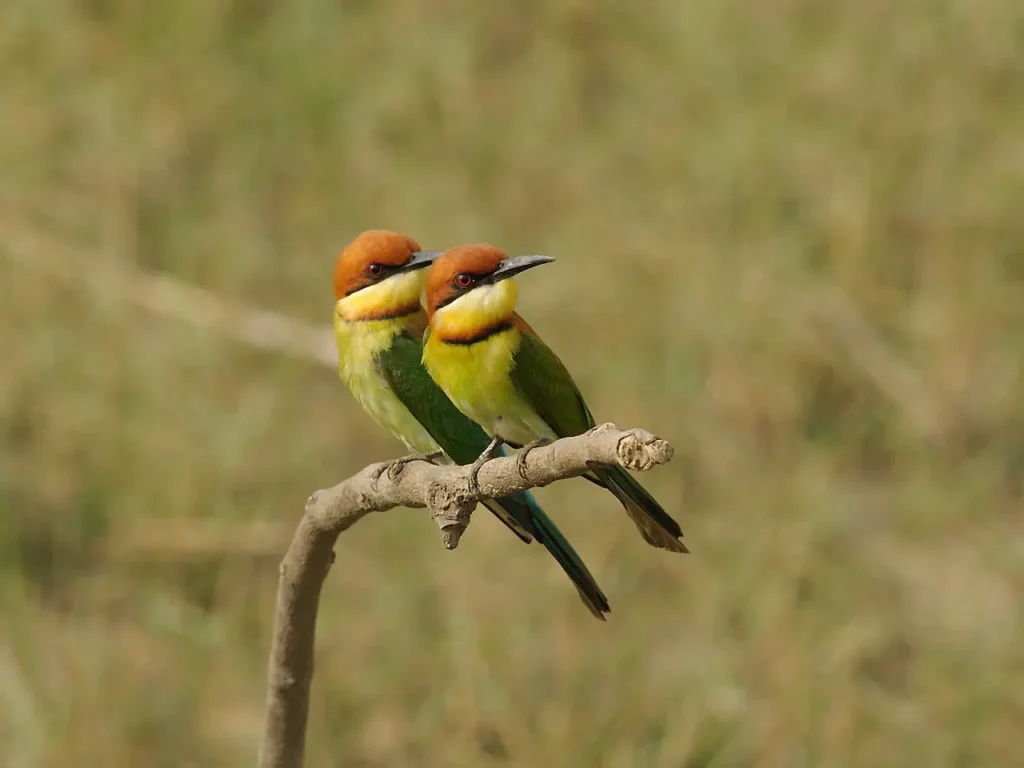
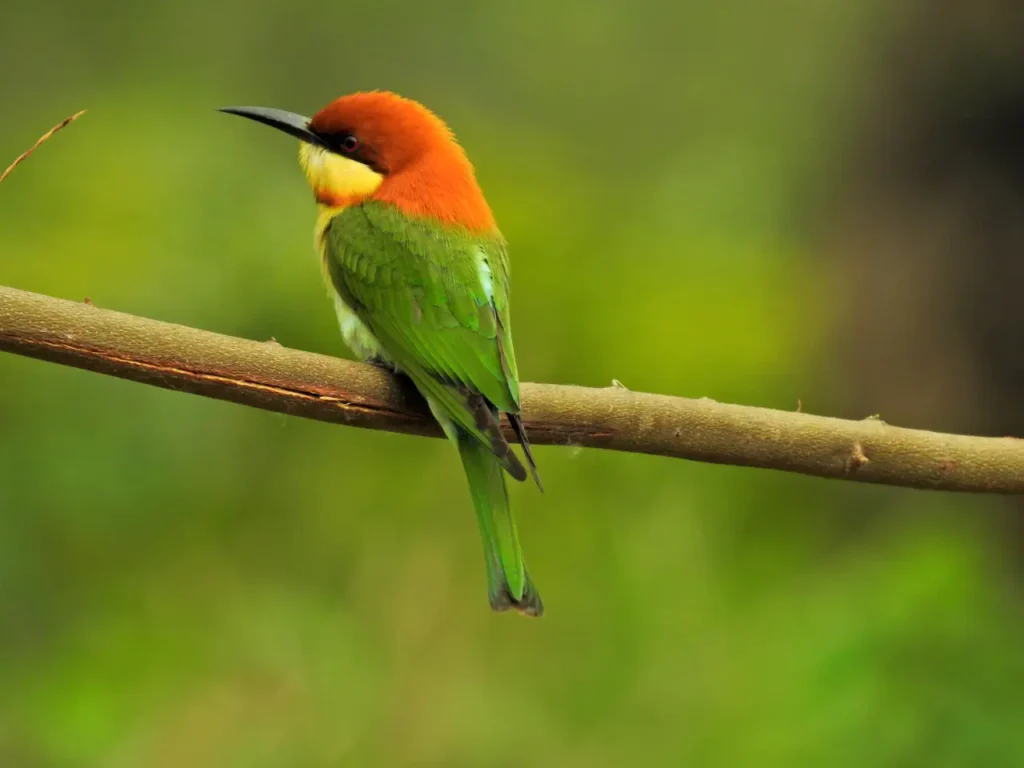
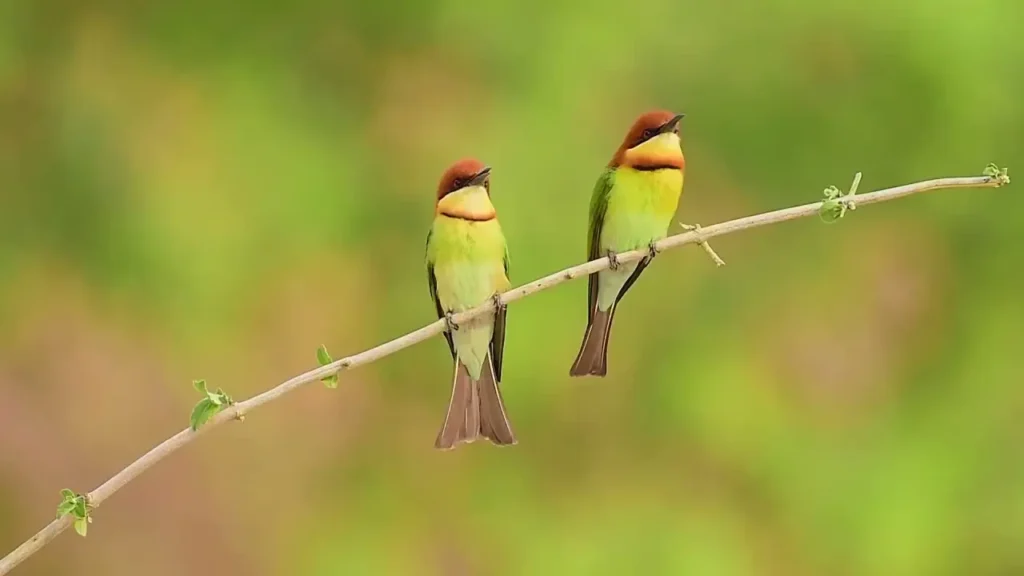
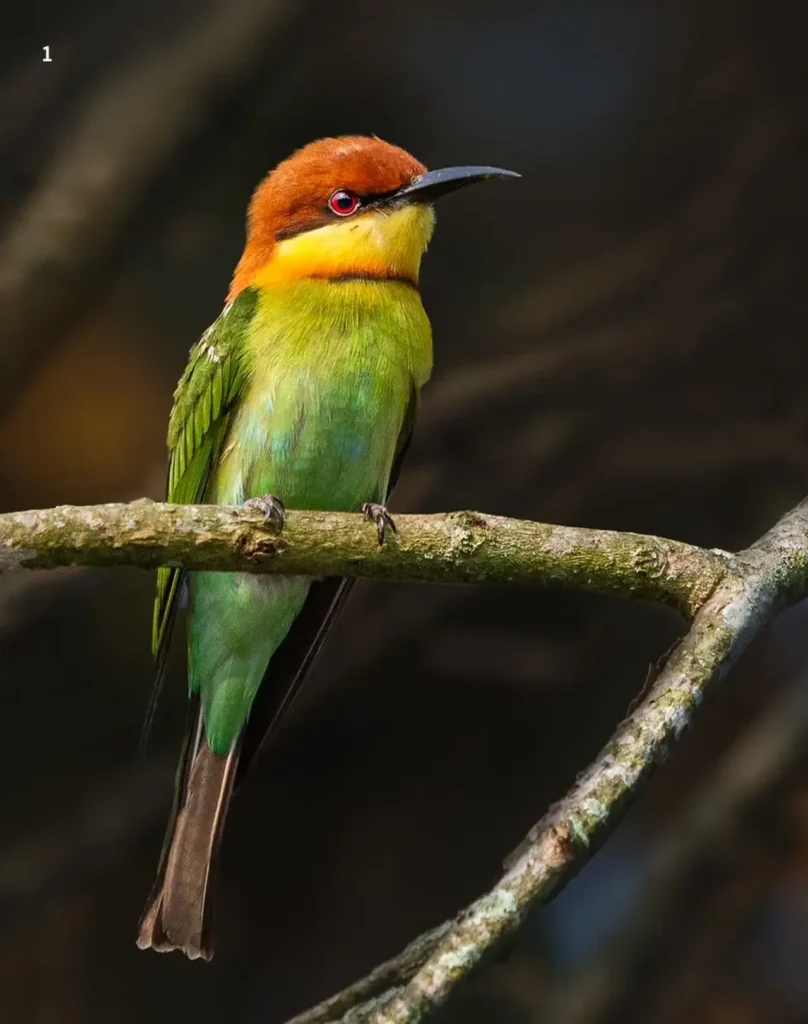
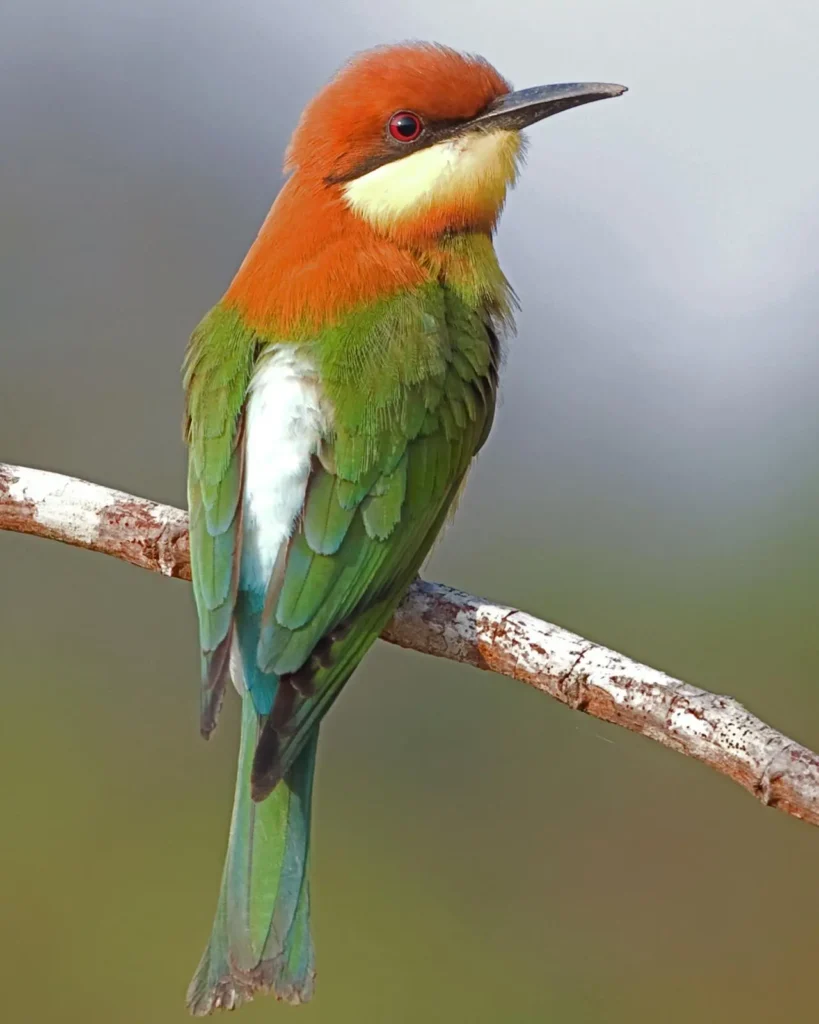
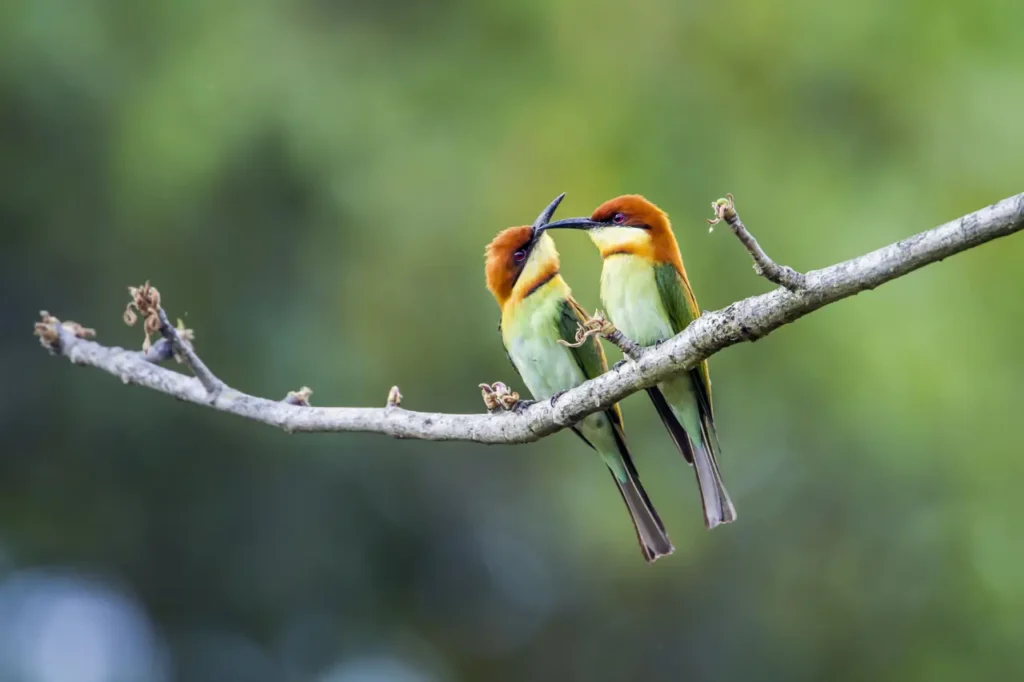
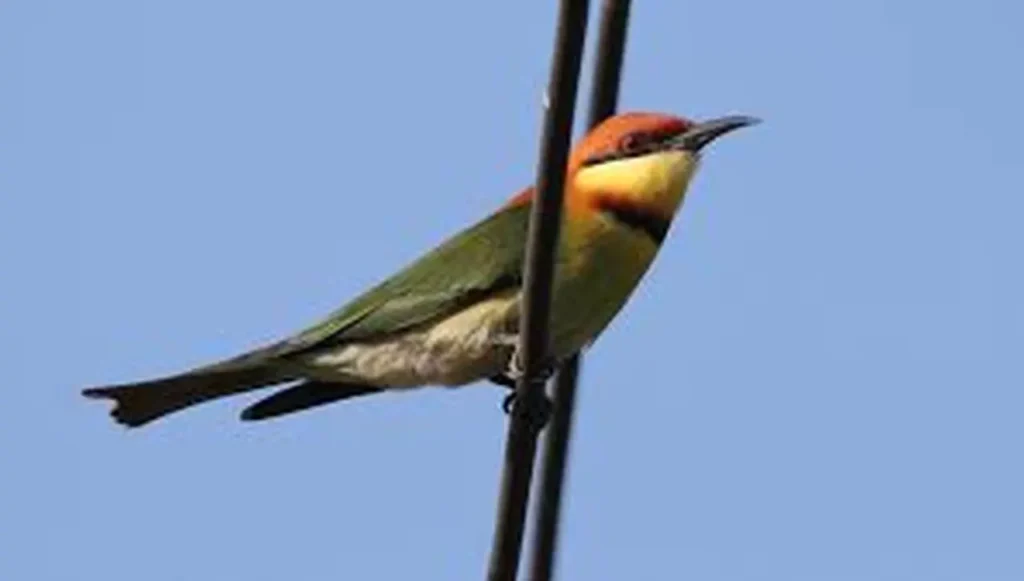
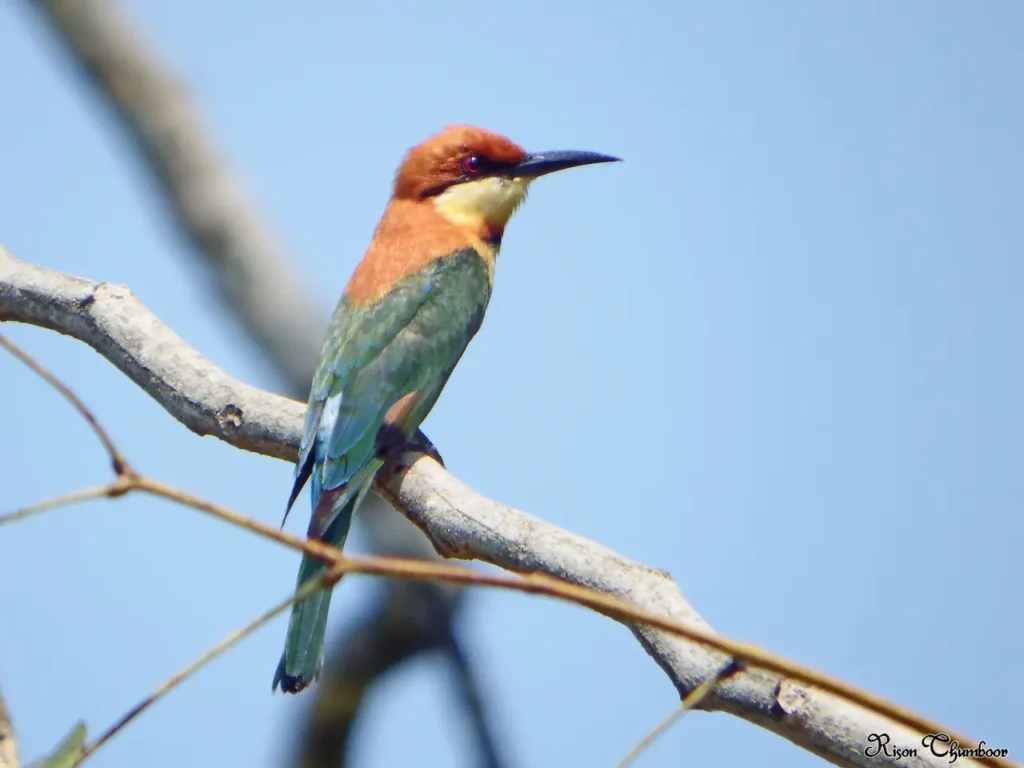
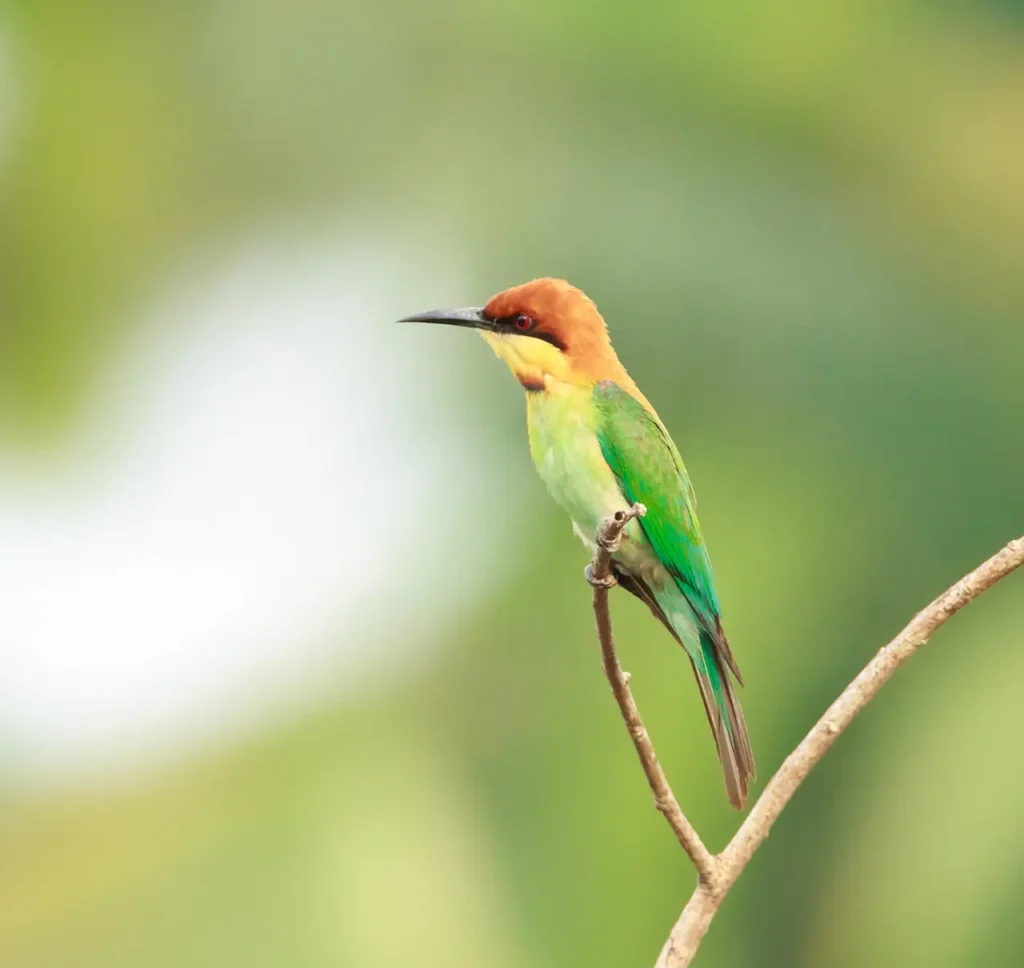
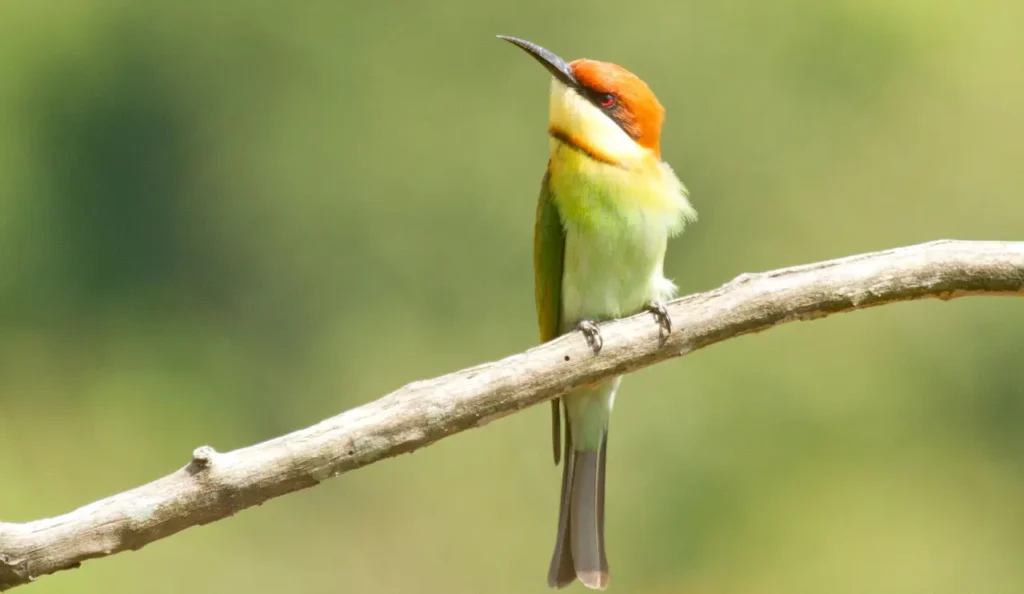
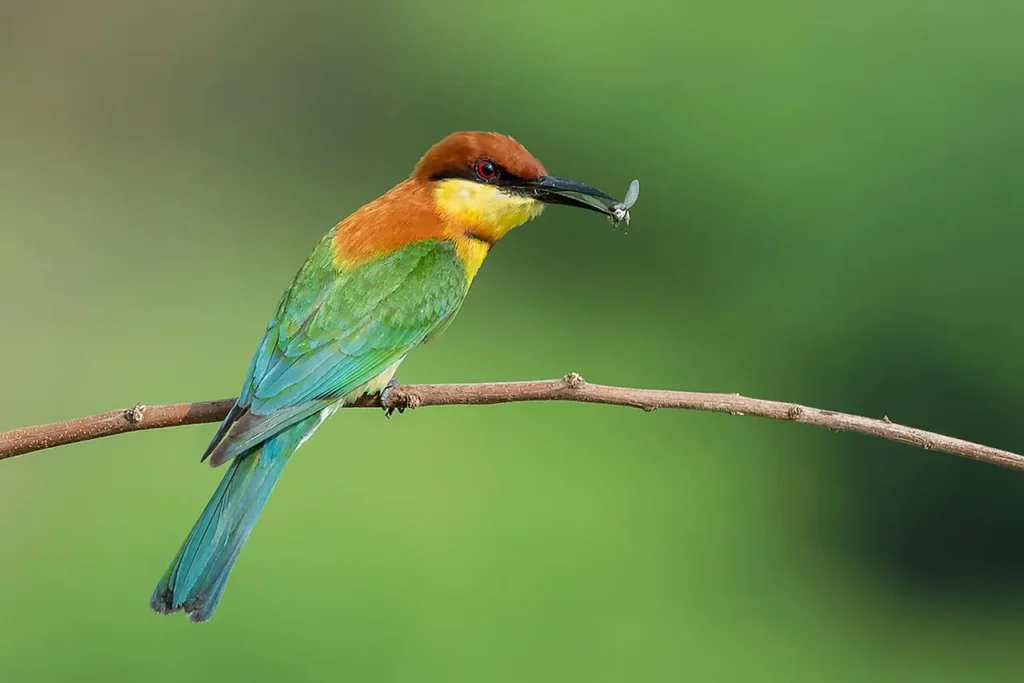
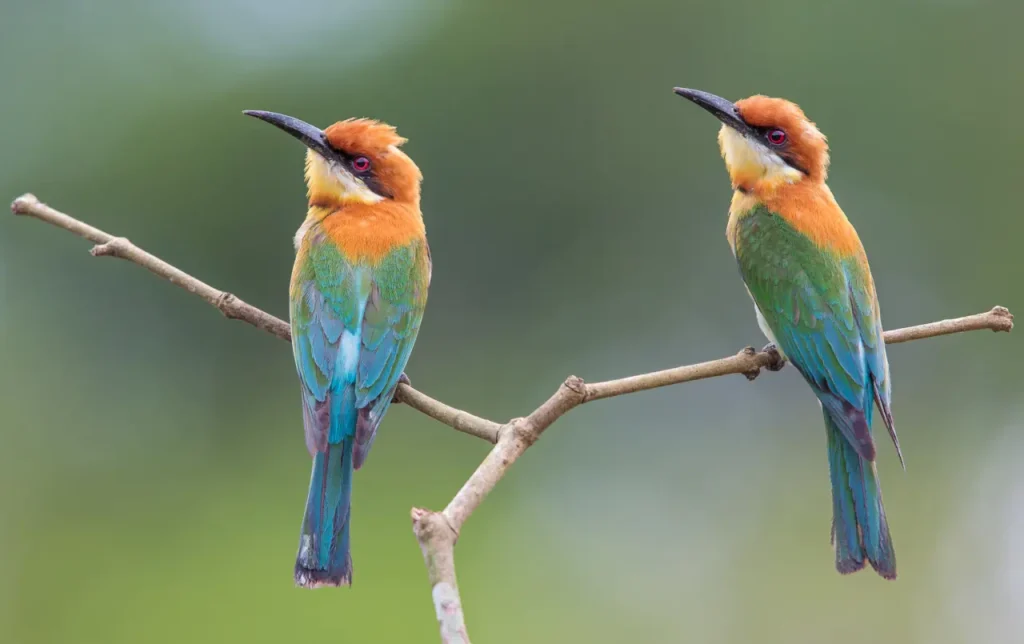
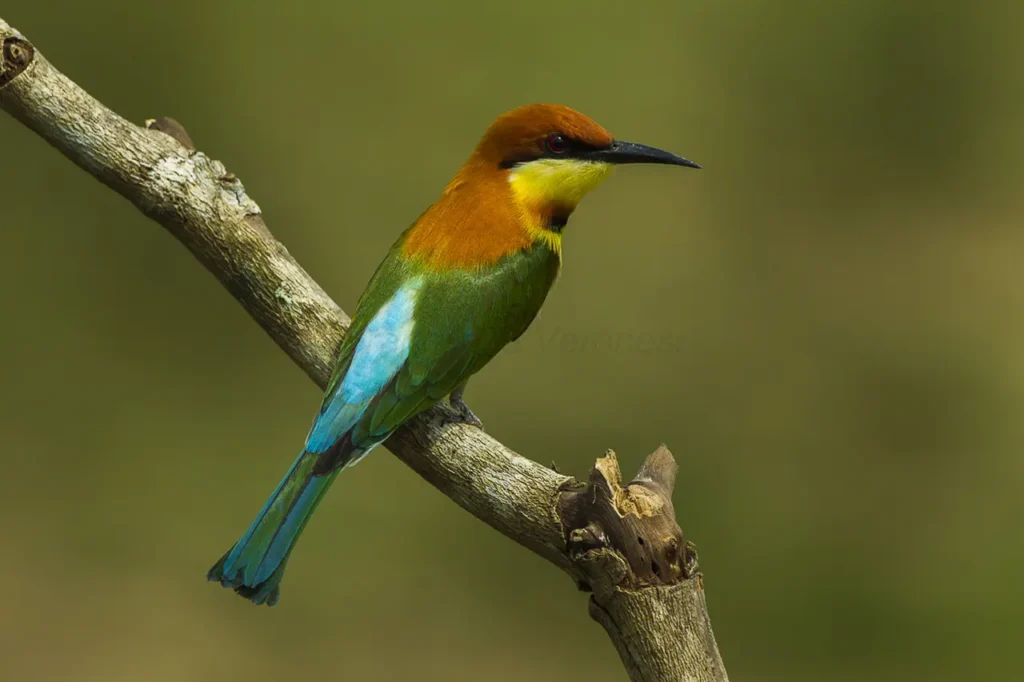
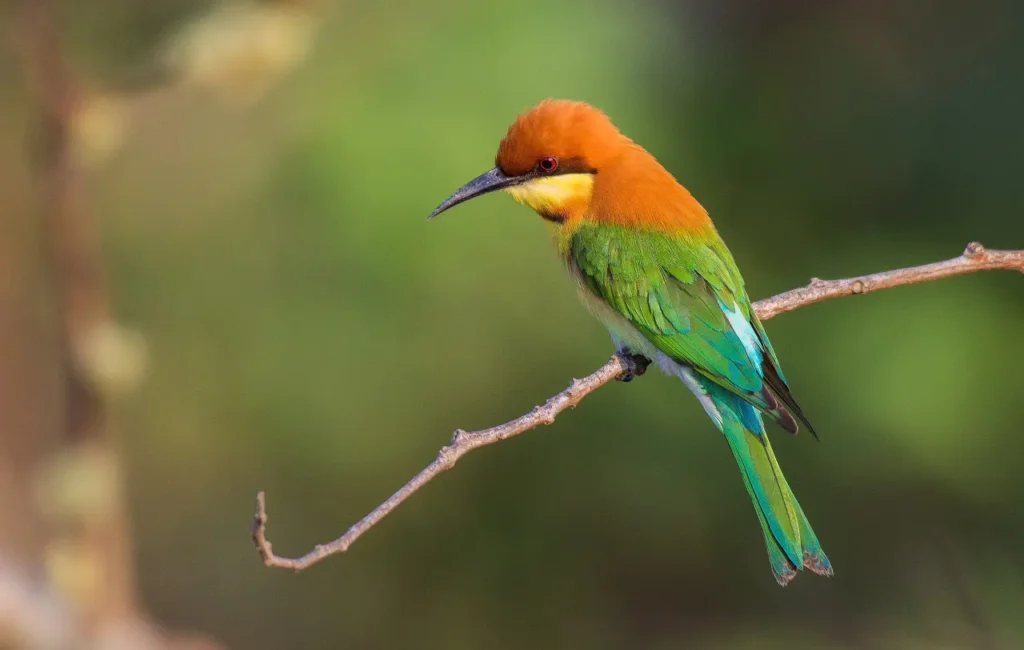
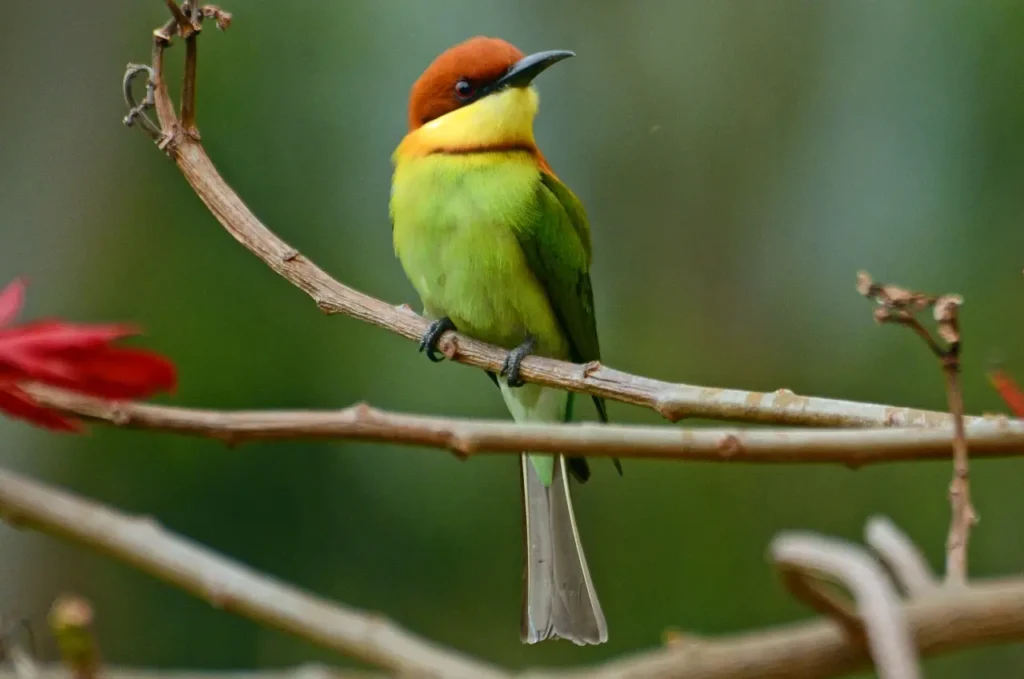
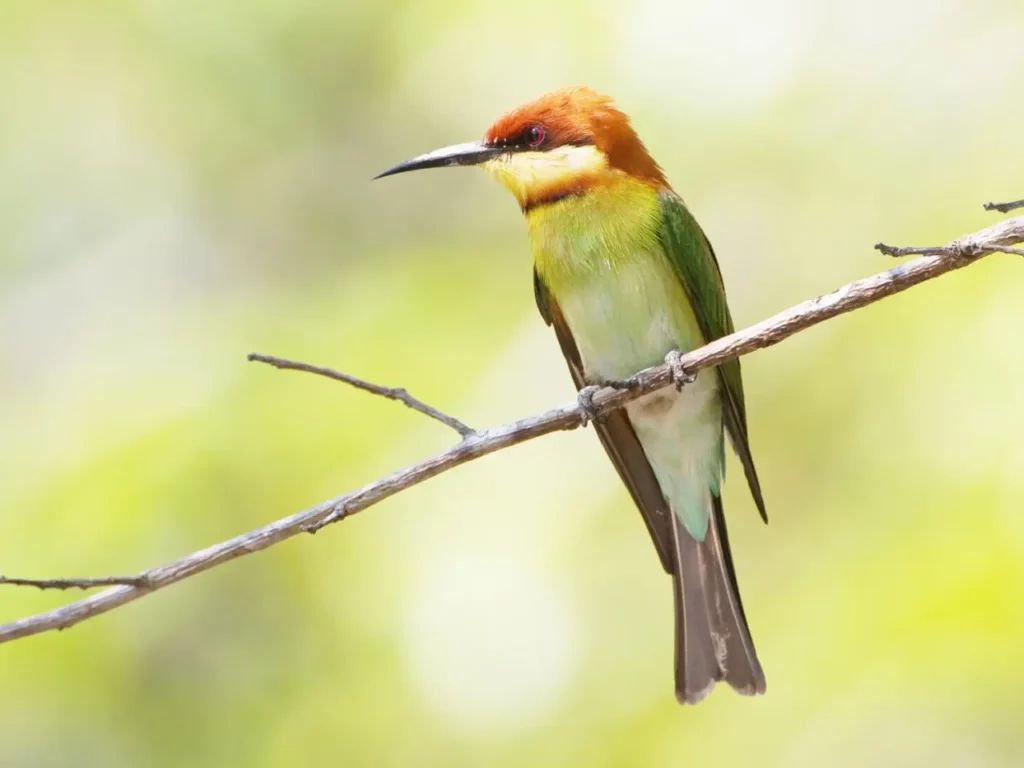
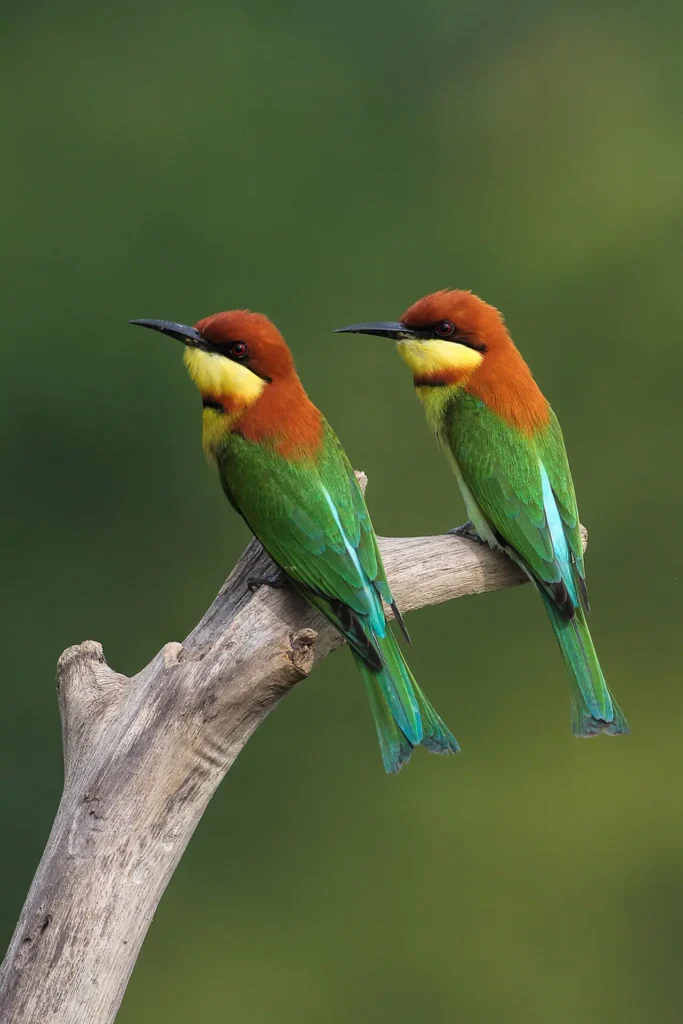
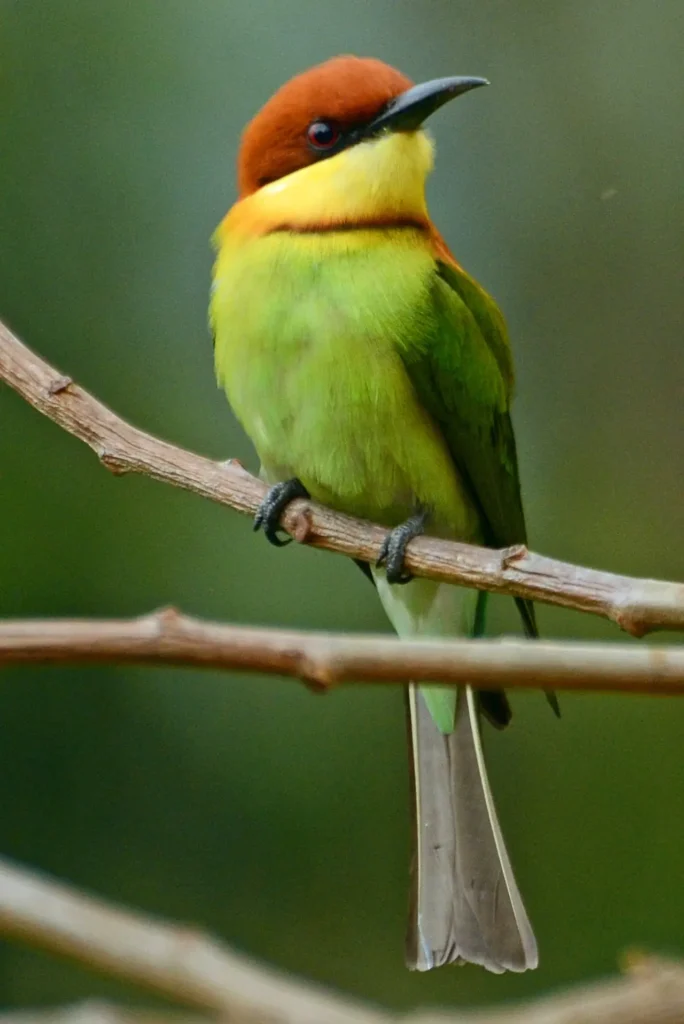
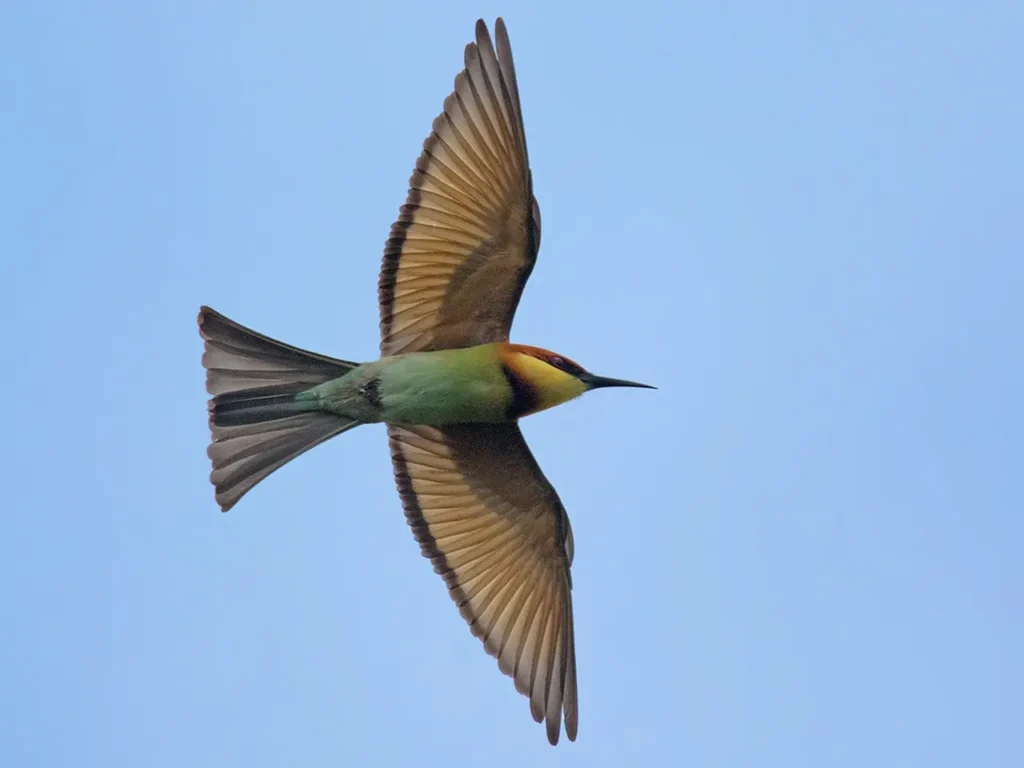
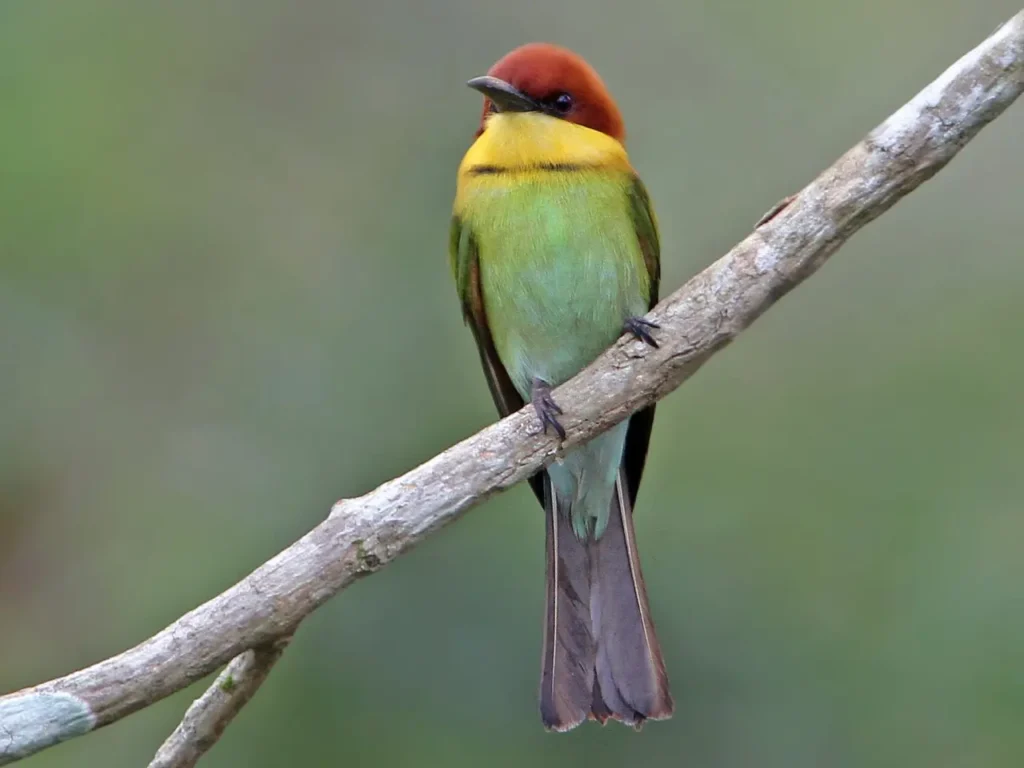
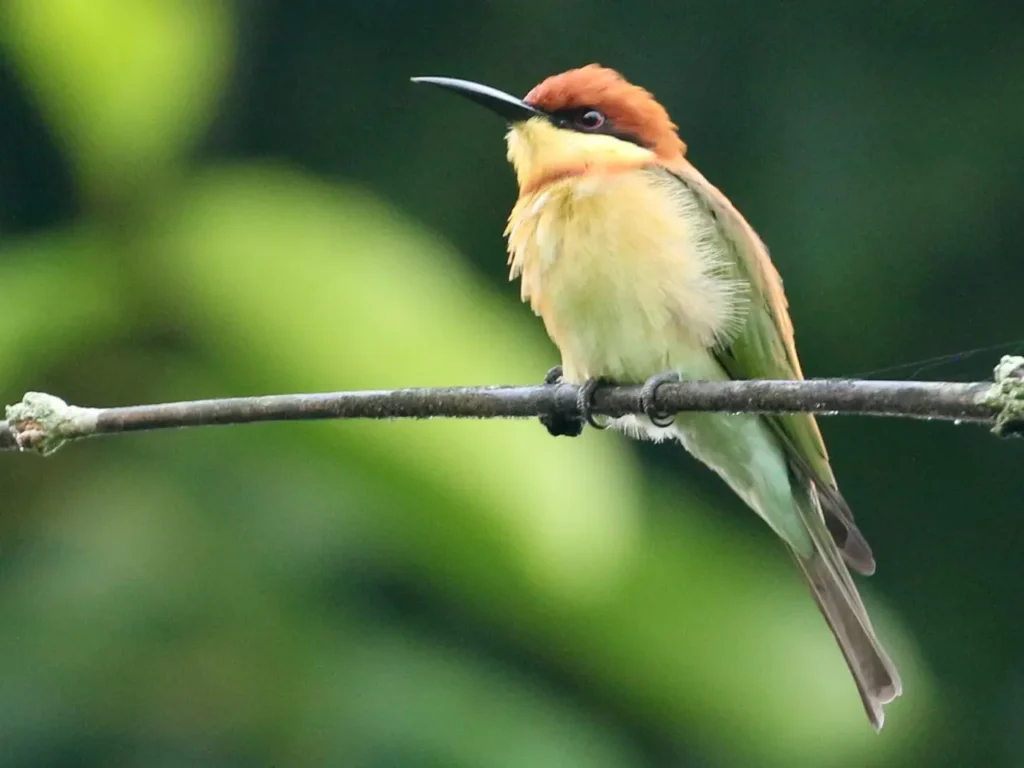
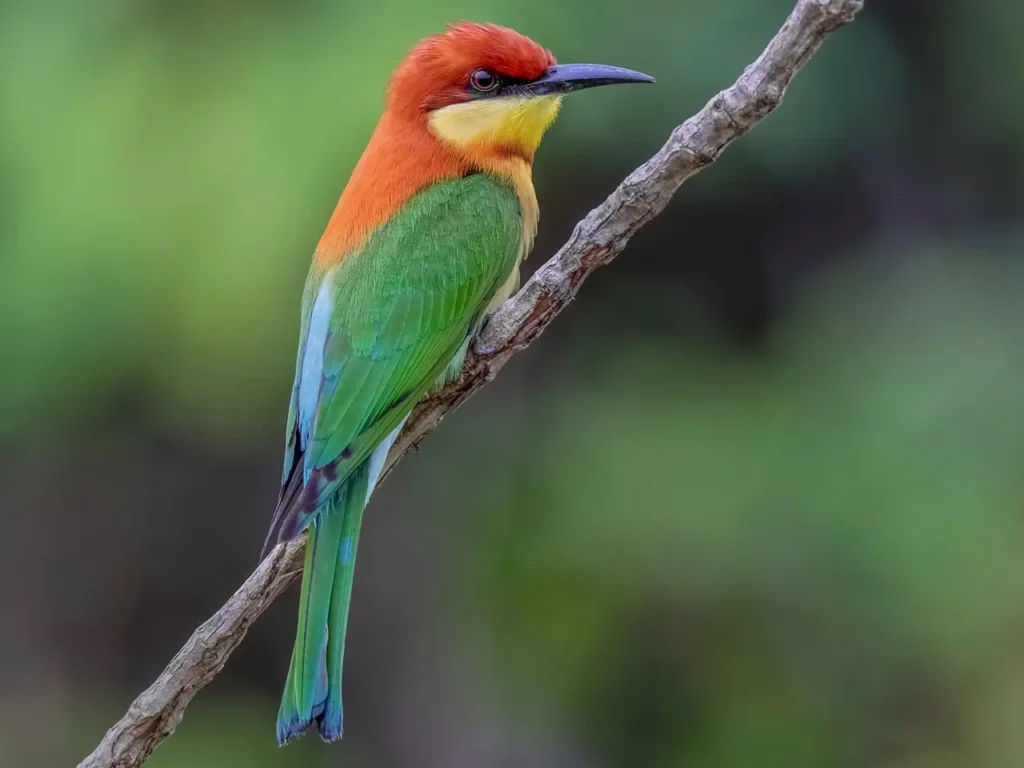
The Chestnut-Headed Bee-Eater is a medium-sized bird, measuring approximately 25 centimeters (10 inches) in length. Its name aptly describes its distinguishing feature—a rich chestnut-colored head that contrasts beautifully with its turquoise-green body and wings. The vibrant plumage extends to its underparts, which showcase a mix of yellow and olive-green shades. A long, slender bill, curved and pointed, is perfectly adapted for catching its favorite prey—bees, wasps, and other flying insects.
Endemic to the Indian subcontinent and parts of Southeast Asia, the Chestnut-Headed Bee-Eater inhabits various habitats, including open woodlands, grasslands, and cultivated areas. It is commonly found near water sources such as rivers, lakes, and marshes, which attract the insects it feeds on. These agile birds are known for their impressive aerial acrobatics, darting and swooping through the air with exceptional speed and precision to capture their prey.
One of the most captivating aspects of the Chestnut-Headed Bee-Eater is its hunting technique. These birds are skilled at catching insects on the wing, using their sharp eyesight and maneuverability to spot and snatch their prey mid-flight. Once caught, they return to a favored perch, such as a branch or wire, where they skillfully remove the stingers and venomous parts of their catch before devouring it.
Beyond their hunting prowess, Chestnut-Headed Bee-Eaters also possess intriguing social behaviors. They are highly sociable birds, often seen in small groups or pairs, and occasionally even in larger flocks during migration. Within their groups, they engage in various displays, such as aerial chases and coordinated flights, accompanied by melodious calls that contribute to the lively ambiance of their surroundings.
During the breeding season, which typically occurs during the warmer months, male Chestnut-Headed Bee-Eaters display their courtship rituals to attract mates. These displays involve intricate flights, showcasing their vibrant plumage and performing impressive aerial maneuvers. Once a pair is formed, they excavate nesting burrows in sandy banks or earthen cliffs, creating a safe haven for their eggs and offspring. The female typically lays a clutch of 4 to 6 glossy white eggs, which are incubated by both parents for about three weeks until they hatch.
The young chicks are born naked and helpless, relying on their parents for food and protection. As they grow, their feathers develop, and they gradually acquire the beautiful colors that distinguish their species. Once fledged, they join their parents in their foraging flights, learning essential skills for survival in their environment.
The Chestnut-Headed Bee-Eater’s presence adds a touch of vibrancy and natural beauty to its surroundings. Its exquisite plumage, remarkable hunting abilities, and social interactions make it a true spectacle of the avian world. However, like many other bird species, it faces threats such as habitat loss, deforestation, and the use of pesticides, which impact their populations. Conservation efforts focused on preserving their habitats, raising awareness, and promoting sustainable practices are essential to ensure the continued existence of these marvelous birds.
Encountering a Chestnut-Headed Bee-Eater in the wild is a delightful experience, providing a glimpse into the intricate workings of nature and reminding us of the diverse and awe-inspiring creatures that








